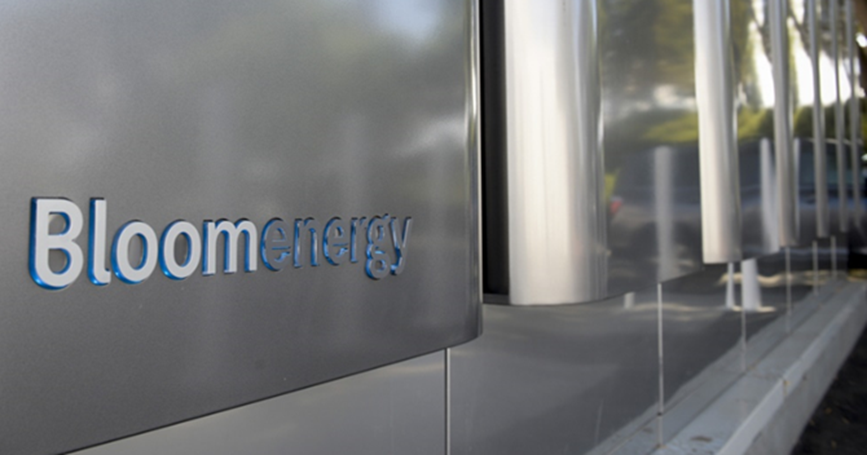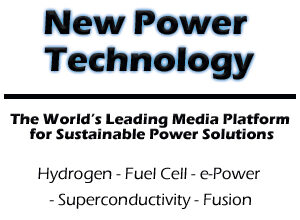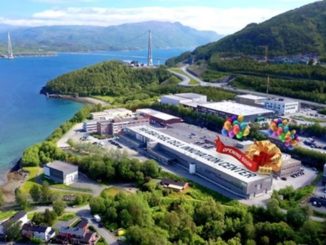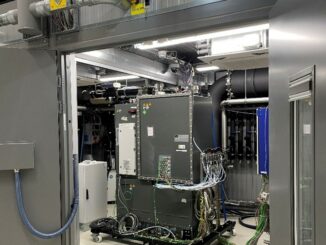
Flush with cash from a $388 million public stock offering and now operating out of its brand new fuel cell gigafactory in California, Silicon Valley-based Bloom Energy reports that its solid oxide electrolyzer technology is receiving high marks in recent testing of its feasibility to equip nuclear plants to produce hydrogen.
On top of those developments, the company says that it will benefit handsomely from President Joe Biden’s signing of the Inflation Reduction Act (IRA) and marked a high-profile entry into the European market with placement of its fuel cell units at Ferrari in Italy.
The stock offering closed August 19, only 10 days after the company reported the encouraging test results from an ongoing demonstration with Idaho National Laboratory, the nation’s premier center for nuclear energy research and development. With nearly 500 hours of full load operation completed at the government laboratory, Bloom’s high-temperature electrolyzer is producing hydrogen more efficiently than other commercially available electrolyzers, including polymer electrolyte membrane (PEM) and alkaline.
Researchers at INL have been conducting a variety of tests on Bloom Energy’s solid oxide electrolyzer at the Dynamic Energy Testing and Integration Laboratory, including steam and load simulations that replicate nuclear power station conditions, an important step in validating full compatibility with a nuclear facility. Running at high temperatures and high availability, the pilot results reveal the Bloom Electrolyzer is producing hydrogen at 37.7 kWh per kilogram of hydrogen and with 88.5 percent LHV (Lower Heating Value) to DC. Dynamic testing has also been conducted and included ramping the system from 100 percent of rated power to 5 percent in less than 10 minutes without adverse system impacts.
“The Bloom Electrolyzer is, without a doubt, the most efficient electrolyzer we have tested to-date at INL,” said John Wagner, director, Idaho National Labs. “When hydrogen is produced from a clean, 24/7 source, like nuclear, it can help us address some of the significant challenges we face around decarbonization. Pairing the research and development capabilities of a national laboratory with innovative and forward-thinking organizations like Bloom Energy is how we make rapidly reducing the costs of clean hydrogen a reality and a real step toward changing the world’s energy future.”
Operating continuously and providing high-quality steam input, nuclear plants are well positioned to utilize electrolyzers to efficiently produce substantial quantities of clean hydrogen with minimal disruption to ongoing operations. Global demand for hydrogen and its emerging applications are projected to increase tenfold or more by 2050, surpassing the current infrastructure for producing and delivering hydrogen. As hydrogen usage expands from traditional industrial uses to the fuel of a clean future, the possibility to produce it in larger quantities and from low- and zero-carbon sources in nuclear plants becomes more compelling.
Yet one of the primary barriers to scalable and abundant hydrogen production is cost – up to 80% of the cost of hydrogen production through electrolysis is electricity. Because the Bloom Electrolyzer operates at high temperatures, it requires less energy than low-temperature PEM and alkaline electrolyzers to split water molecules. Producing hydrogen up to 45 percent more efficiently than PEM and alkaline electrolyzers when combined with external heat, it supports a trajectory for hydrogen to become more economic.

“We are proud to have partnered with Idaho National Laboratory on this landmark demonstration. By combining our Bloom Electrolyzer with steam, the laboratory has been able to validate that the DC electrical efficiency for our electrolyzer is better than any reported commercial or demonstration unit in the world for hydrogen production. This is an important milestone as we work to build a hydrogen economy,” said KR Sridhar, founder, chairman and CEO of Bloom Energy.
In July, Bloom celebrated the grand opening of its new multi-gigawatt manufacturing plant in Fremont, California. Representing a $200 million investment, the modern 164,000 sq ft facility follows recent expansion of the company’s global headquarters nearby in San Jose as well as the opening of a new research and technical center and a hydrogen development facility in Fremont.
“The IRA is truly a game changer for Bloom Energy,” said Sridhar. “While some companies may benefit from one or two parts of the IRA, we believe that Bloom can capitalize on nine key provisions. They range from the hydrogen production tax credit (PTC) to tax credits for microgrid and biogas equipment, and support for American factories like ours.”
“Bloom has the most efficient electrolyzer on the market, and the hydrogen PTC will make our zero-carbon hydrogen cost competitive with conventional gray hydrogen,” said Sharelynn Moore, executive vice president and chief marketing officer. “This is critical for decarbonizing hard-to-decarbonize industries like fertilizer, steel, cement, and aviation. Second, by bringing more hydrogen to market, it will increase demand for hydrogen-powered Bloom Energy Servers.

The partnership with luxury auto maker Ferrari of italy signals Bloom’s entry into European markets and is a first step toward potentially larger projects between the two companies. Aiming to achieve carbon neutrality in manufacturing by 2030, Ferrari installed one megawatt of Bloom’s solid oxide fuel cells at its expanding manufacturing facility and headquarters in Maranello. The Bloom energy servers will initially provide 5% of the energy needed at the site. They are expected to cut gas requirements by around 20% from the existing combined heat and power system.



